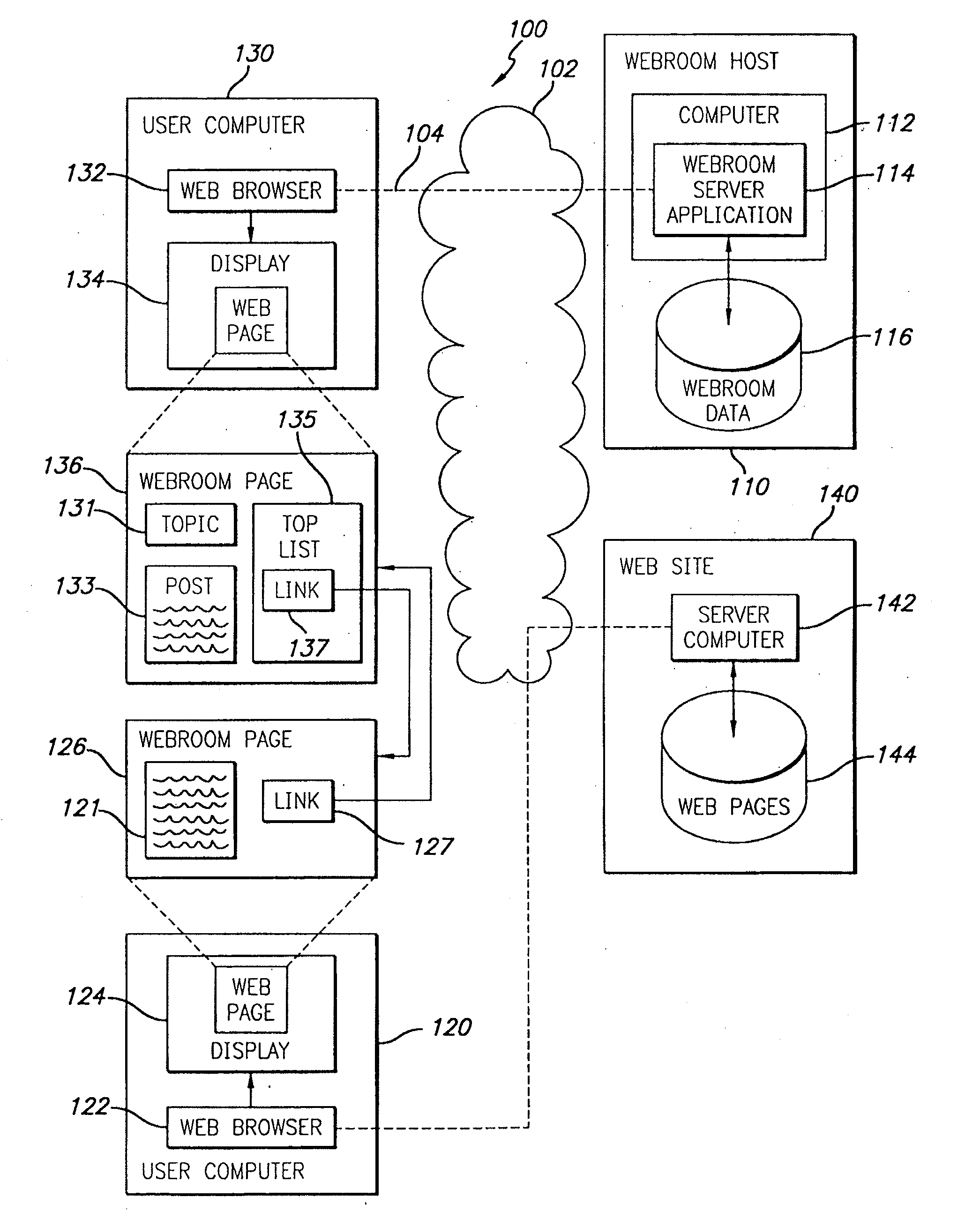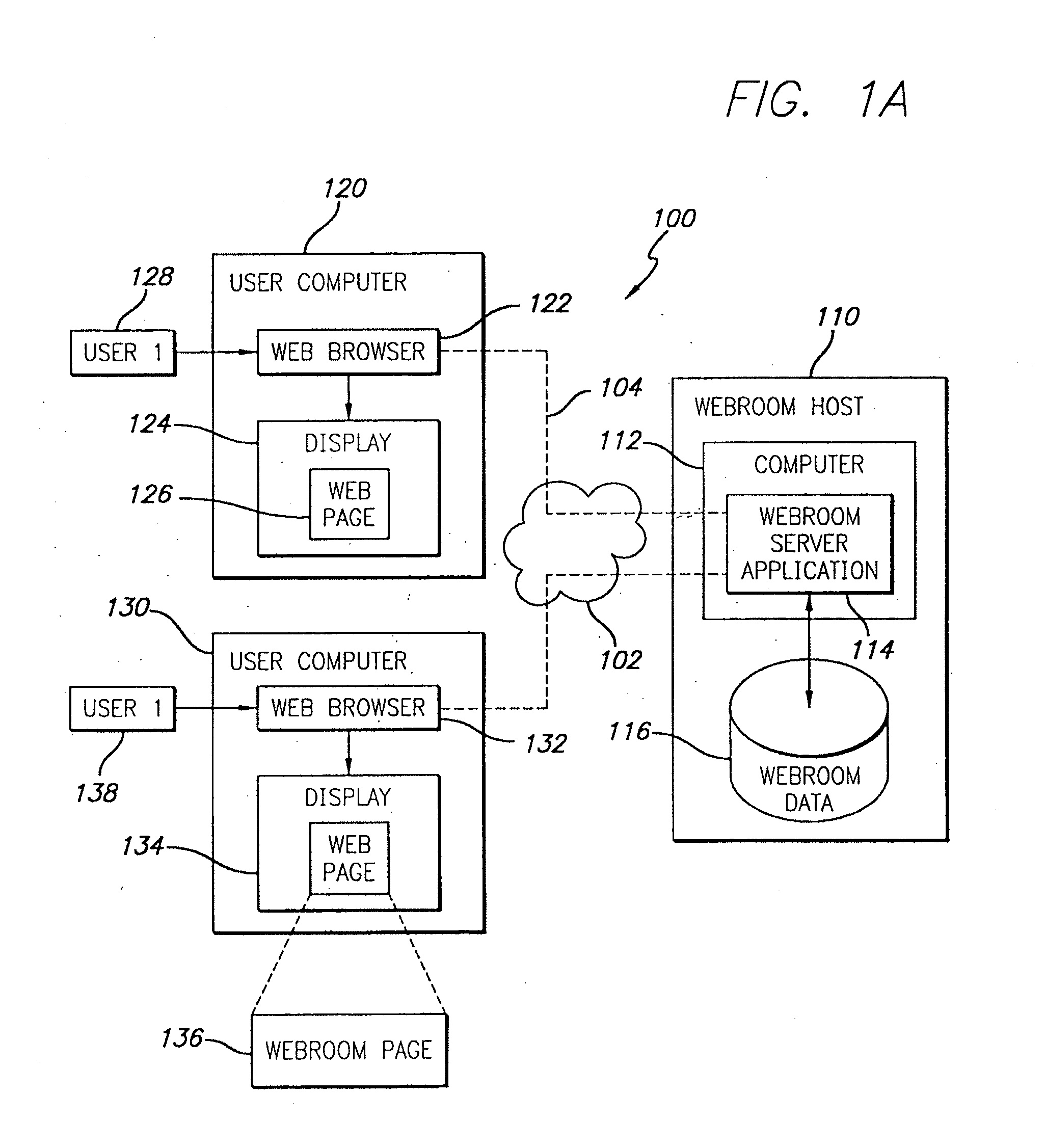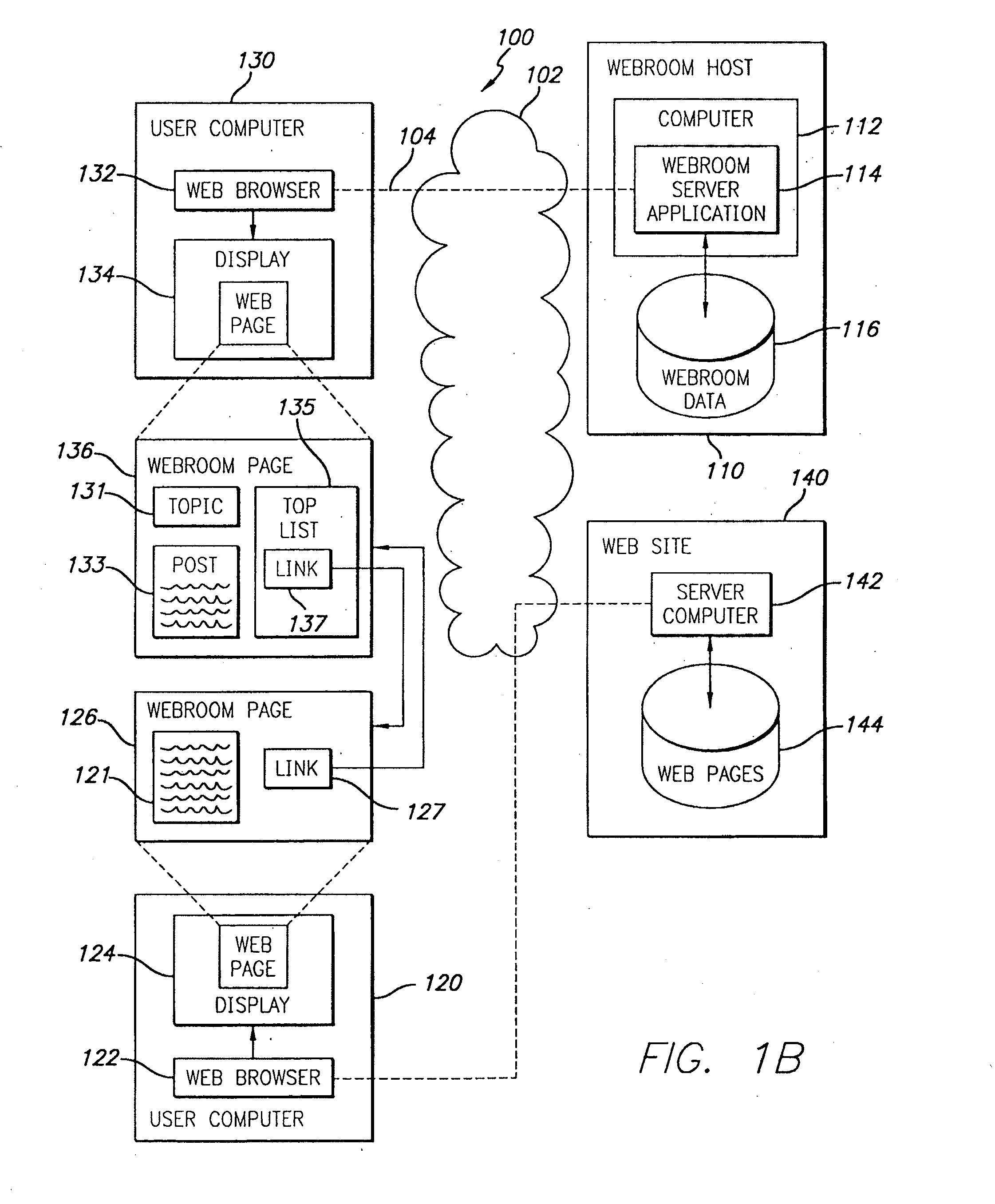Method, apparatus and system for hosting information exchange groups on a wide area network
a technology of information exchange and wide area network, applied in the field of methods for exchanging and locating information on computer networks, can solve the problems of prior art information exchange groups that do not provide a systematic method for discriminating between desired and undesired information, information exchange groups contain limited quantities of desired information, and achieve superior quantity and quality of information content, the effect of gathering and disseminating useful information
- Summary
- Abstract
- Description
- Claims
- Application Information
AI Technical Summary
Benefits of technology
Problems solved by technology
Method used
Image
Examples
Embodiment Construction
[0044]The present invention satisfies the need for a method and system for providing an information exchange group that adds new functions and improves upon prior art information exchange groups. In the detailed description that follows, like element numerals are used to describe like elements illustrated in one or more figures. Various terms and acronyms are used throughout the detailed description, including the following:
[0045]Application. Within the context of computer hardware and software, an application is a set of one or more computer programs that performs a function when executed within a computer hardware device. If the set is comprised of plural programs, the programs are coordinated to perform a function together; such programs may also perform other functions individually. Similarly, a program may be comprised of plural modules that perform certain functions individually and other functions when combined in various ways.
PUM
 Login to View More
Login to View More Abstract
Description
Claims
Application Information
 Login to View More
Login to View More - R&D
- Intellectual Property
- Life Sciences
- Materials
- Tech Scout
- Unparalleled Data Quality
- Higher Quality Content
- 60% Fewer Hallucinations
Browse by: Latest US Patents, China's latest patents, Technical Efficacy Thesaurus, Application Domain, Technology Topic, Popular Technical Reports.
© 2025 PatSnap. All rights reserved.Legal|Privacy policy|Modern Slavery Act Transparency Statement|Sitemap|About US| Contact US: help@patsnap.com



